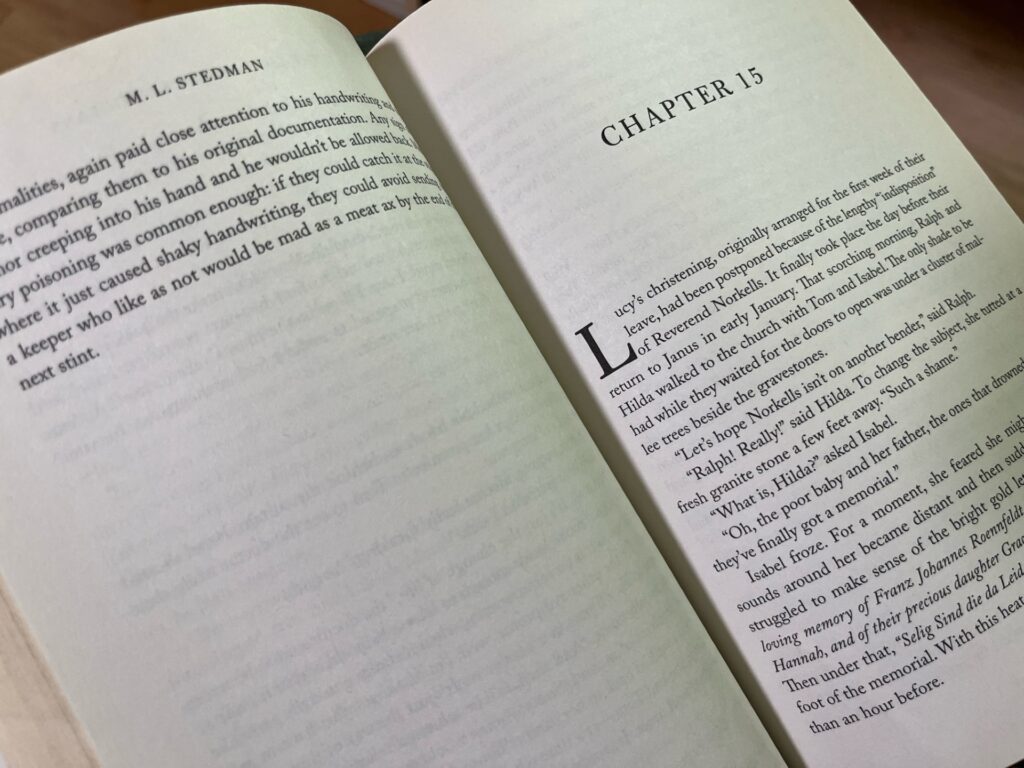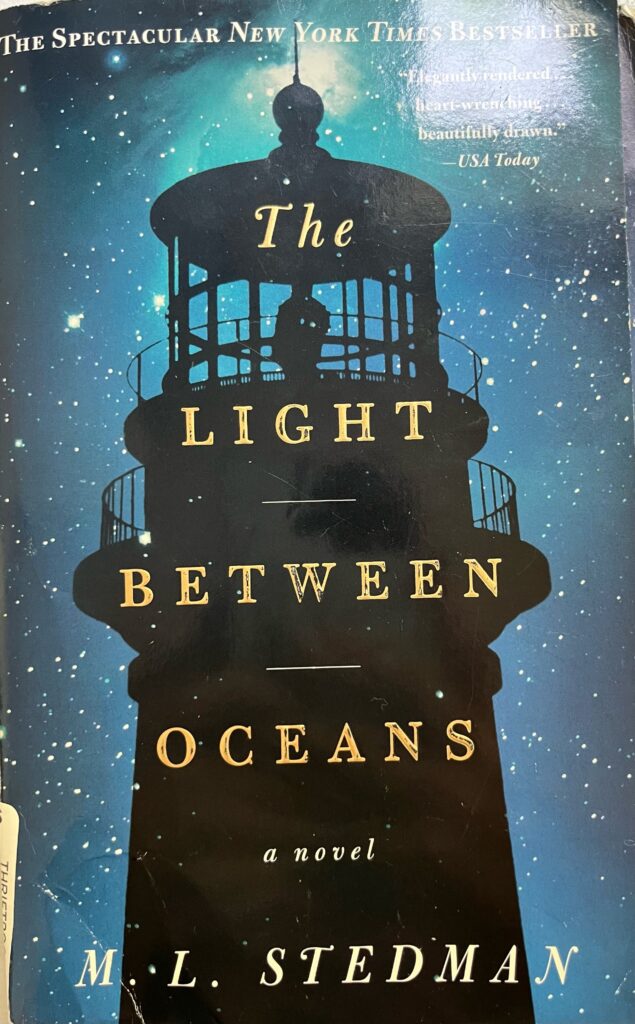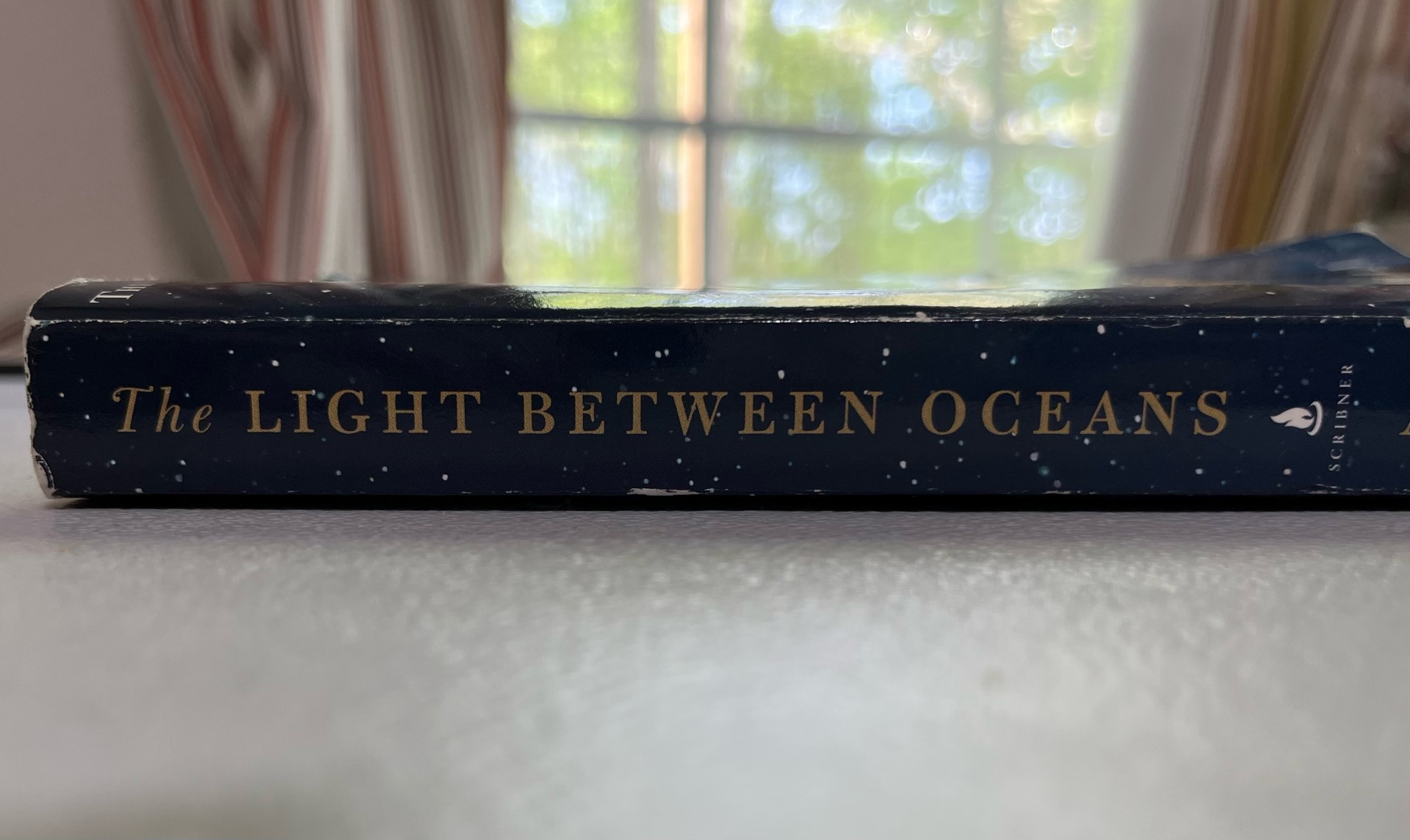“You only have to forgive once. To resent, you have to do it all day, every day. You have to keep remembering all the bad things.”
I will admit, that this book threw me for a loop. It was so clearly not what I expected when I began it that I really cannot explain what I thought it was going to be. But The Light Between Oceans has some incredibly in-depth situations that force you to consider right and wrong in the most challenging and emotionally charged situations. Written by Australian author M. L. Stedman, it also is placed in one of the most extreme and unique places on the globe. This story will leave your mind spinning and unsettled.
Synopsis
The story begins with the young veteran Tom Sherbourne. Still haunted by his horrifying experiences in the war and his difficult family background, Tom develops an interest in lighthouse keeping. After training, he decides to take a post on the remote island of Janus. Except for a visit to shore every three years and a supply boat that comes every three months, he has no contact with humans. He is happy maintaining his lighthouse day after day with no interaction until he falls in love with a bright, bold girl on the mainland. They soon are married and live together on their isolated island.
This is when the trouble begins. His young, innocent wife, Isabel, desires children and motherhood wholeheartedly. But after she suffers two miscarriages, she begins to grow sorrowful of her chances. When her final pregnancy is ended at seven months by a stillborn birth, she is completely devastated. Two weeks later a mysterious rowboat arrives carrying a dead man and a living, newborn baby. Isabel, still full of hormones and mourning over her lost baby, is delighted at the arrival of this small child. She convinces Tom to assume the baby is an orphan and keep the child without alerting the authorities of the rowboat incident. She misguidedly thinks that this will protect the child from a harrowing adoption process and pretends the child is their own.

Tom is continuously haunted by the guilt of not reporting the incident. As a lighthouse keeper, he is required by law to report anything strange or out of the ordinary, but he has kept this huge incident quiet. And yet, despite his guilt, he has fallen in love with the baby. Two years later, when it is finally time for them to go ashore for a week, Isabel and the child have bonded so well it is tighter even than a normal child-mother bond. On shore, however, they learn that a local woman’s husband and child went to the sea on a rowboat and disappeared without a trace. The woman has become desperate at her missing child and husband’s absence and is constantly walking the shores searching for them.
There is no doubt that the child Isabel and Tom have taken in is this lady’s child. However, Isabel is clouded by her love of the baby and insists that they should not tell anyone for the child’s safety. Tom, torn by her sorrow and need for a child and his sense of right and wrong, stays silent for a time. But eventually, he cannot keep his guilt at bay. He admits to their essential kidnapping of the now girl and takes the blame completely on himself, protecting his wife.
Isabel is incredibly angry with him. In her eyes, he has taken her child from her. She cannot see reason or the morality Tom is faced with. She plans to remain silent, allowing Tom to face extreme jail time and/or death. At the same time, their child, who does not understand what is happening, is given back to her biological mother. She constantly fights against everything, begging to go back to her “parents,” devastating her mother.
Right and Wrong
Some of the crazy themes of morality, emotion, and consequences can be kind of shocking to digest. One of the main ones is the question of Tom and Isabel keeping the child in the beginning. Of course, they could care for the child well and they were at a point in their relationship where a child would be both healing and give them something to work together on. But they did not give the proper authority or check and see if the child’s parents were searching for it. The isolation on the island had truly marred their perspective to other humans existing or being affected by them.

When they discovered the child’s mother, a new question came into focus. It was one thing to operate out of ignorance, another to knowingly deprive a mother of her child. Tom had the needs of his wife and the needs of the world on opposite sides. His wife had faced horrible depression and grief over her lost children. She had become so attached to this child and she had no one else on their island. But it was incredibly clear that keeping the child was illegal and wrong. Tom had to balance two incredibly difficult responsibilities on his shoulders.
The final moral issue I want to mention is that of the child’s mother. She had to choose whether to prosecute against Tom first. He had taken away her child’s babyhood from her and had turned her child into someone who hated her and viewed her as a kidnapper. She also had to consider whether or not to keep the child or give it to Isabel, who she believed had been forced to kidnap her daughter by Tom. Her child seemed to hate her and was going into a trauma-reactive state of depression. If she gave her baby back, it was almost certain that its mental and physical health would improve.
While this book started slow, it soon became a story that occupied my mind and truly put me in kerfunkels. It dives into some moral choices that are emotionally charged and seem to be a lose-lose at all times. The ending surprised me just as much as the story did overall. I also appreciated the subtle, not overdone, tribute to Australian land and its unique characteristics. The author used a place she loved and wanted to share about but did not overdo it. A book of moral issues and solutions, it will engage your mind and heart in many ways.
